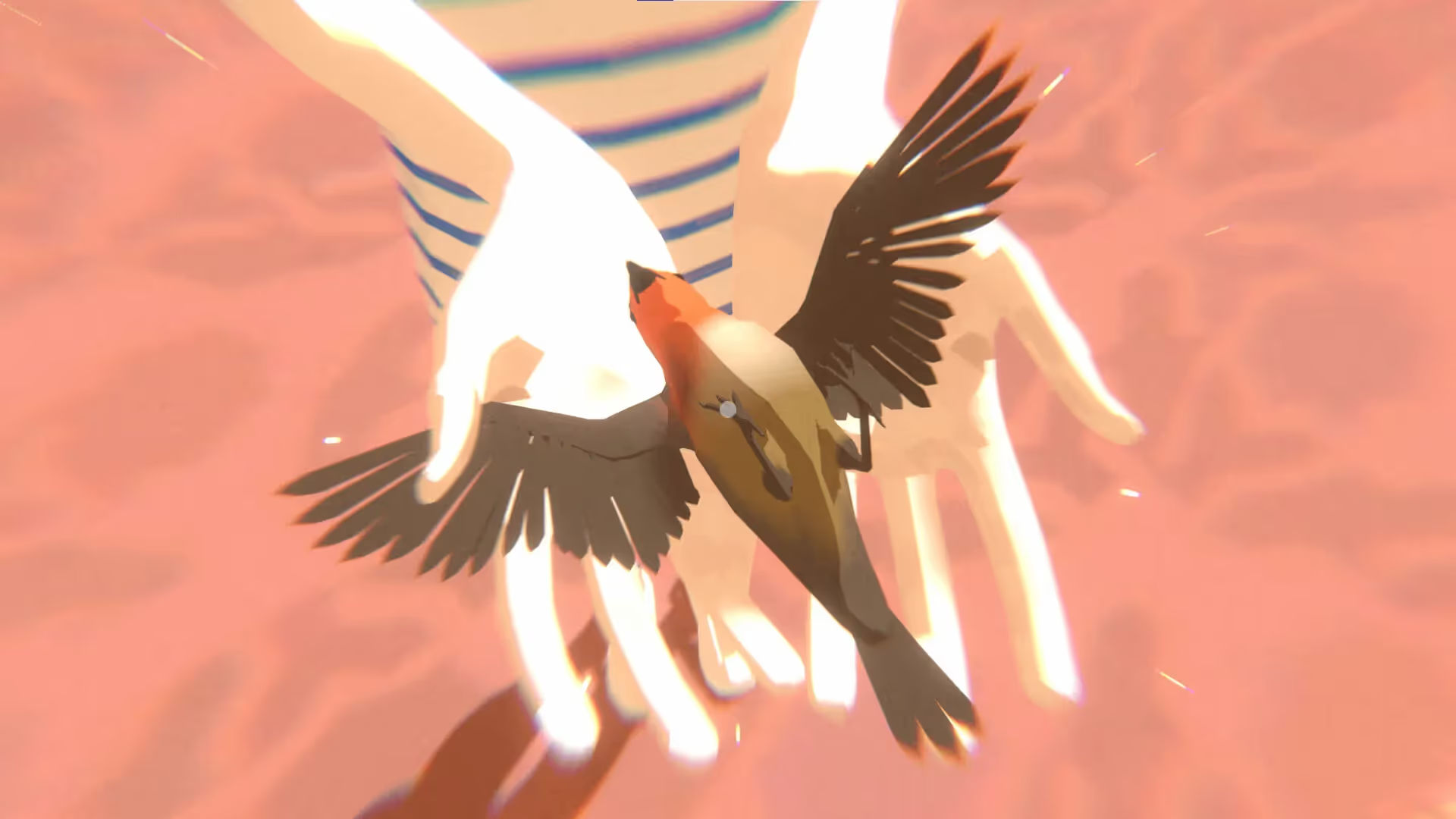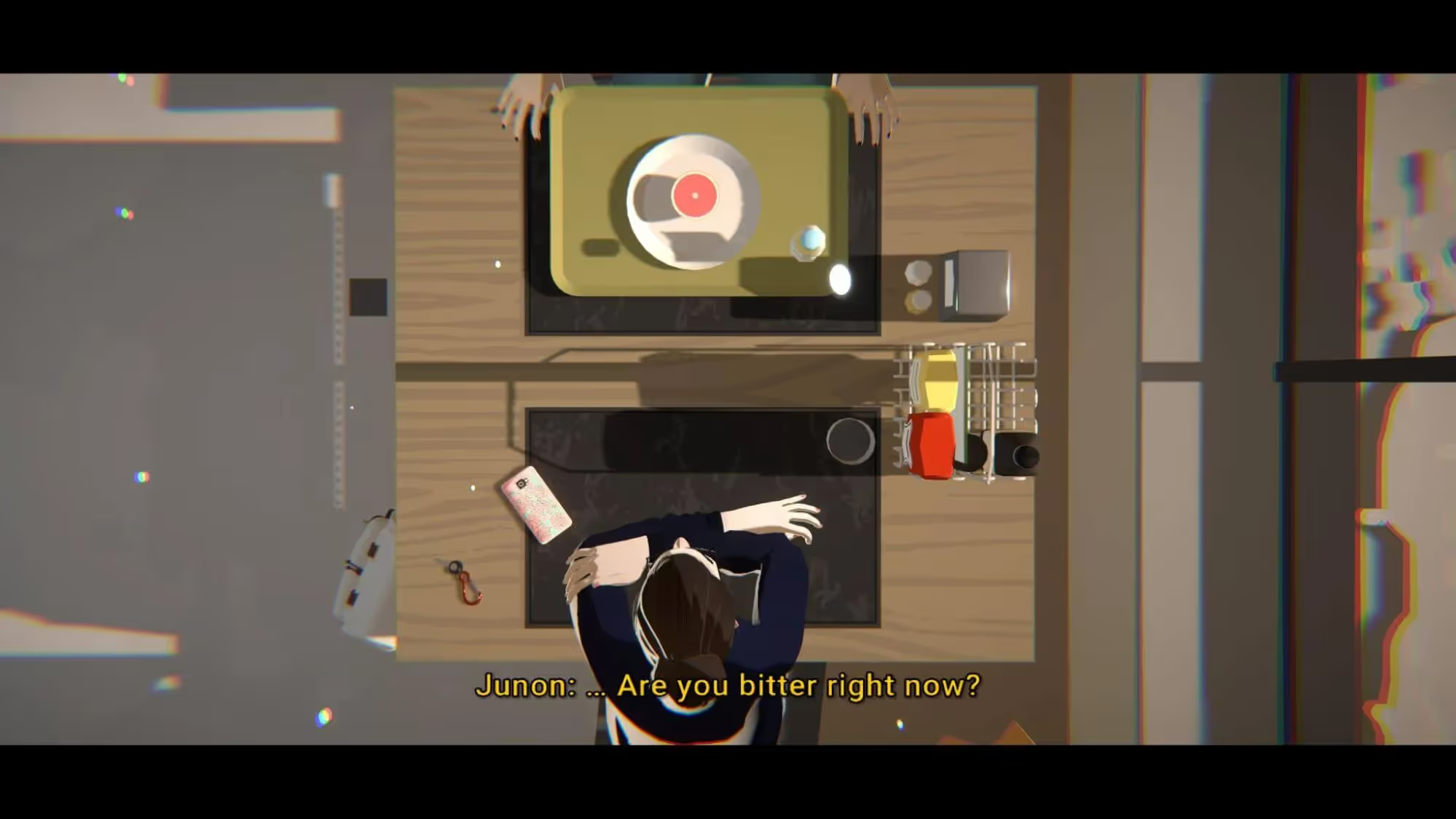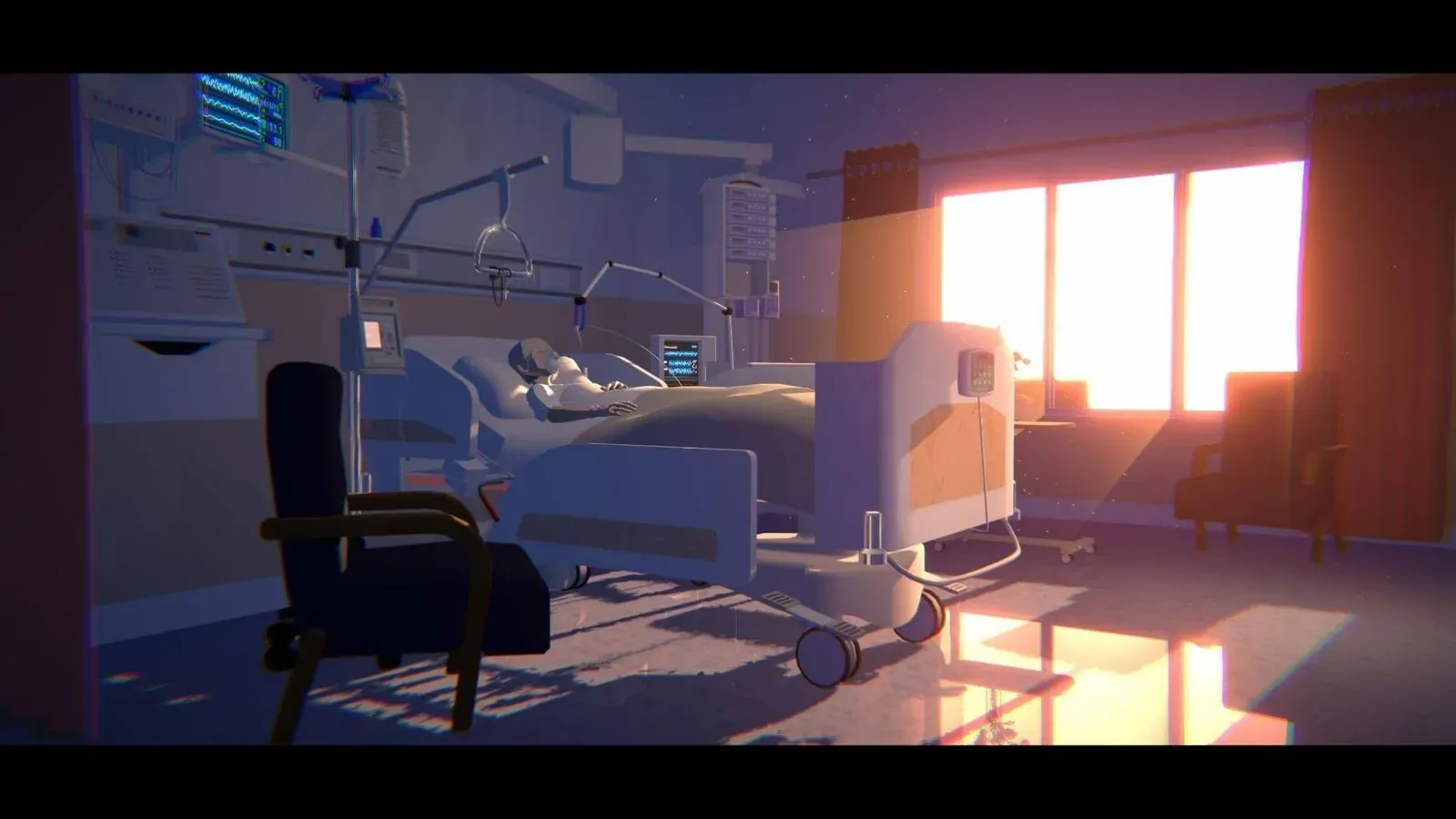Switch
PS4
PS5
Xbox One
Xbox Series
The Wreck, a “mature 3D visual novel” created and published by French studio The Pixel Hunt, doesn’t tell you it’s a game right away. In fact, the first thing I saw when I booted up the software wasn’t a standard menu screen, but an image that looked like a computer desktop. The reason why became clear as I loaded up the only “program” usable on the computer, and began a new project — a screenplay began to unspool itself before my eyes, and as it did, I began to see images of what the text was describing. The screenplay was, in fact, the game itself.

The framing of game-as-cinema was fitting, it turns out. This is a game that’s definitely best gone into blind, but I’ll give you the premise. Junon, our protagonist and player character, is a struggling screenwriter somewhere in the depths of her mid-thirties, rendered stuck in the past by an initially unnamed trauma that haunts her every waking moment. And as if things couldn’t get worse, she’s just been summoned to the hospital by doctors delivering horrific news — Junon’s mother, whose relationship with her children has been deeply fraught, has suffered a near-fatal aneurysm. Worse, her mother — or Marie, as Junon chooses to detachedly call her — has forged Junon’s signature on her medical papers, forcing Junon to make an impossible decision. Will Marie live, possibly as a shell of herself, requiring intensive care for the rest of her life? Or will Junon tell the doctors to pull the plug? The decision is at the heart of the story, as is Junon’s relationship with her mother. Themes of trauma and grief passed down from parent to child thread their way through the narrative, touching every aspect of Junon’s life that we’re able to see.

The game, which has a short runtime of approximately five hours, weaves through memory and the present with deft awareness. You, as Junon, must juggle delicate conversations with yourself, your sister, your ex-husband, and others, through a simple, text-based interface that aptly defines itself as a visual novel (though there aren’t a whole lot of choices you can make that will impact the story). However, every time a conversation goes south, you run, heading out to your car and breaking off the dialogue. And every time you get behind the wheel, you encounter the same car accident - the titular wreck, where you swerve to avoid a deer and crash off the road. In the heart-stopping moments that follow, where time seems to slow and you’re frozen in place as the car skids and flips, you’re prompted to grab one of many disrupted objects floating about the car — a book, a hairbrush, a lighter. And then, the scene changes. You’re placed in an unmoving diorama of memory, only able to navigate by moving forwards and backwards in time, witnessing crucial snapshots of Junon’s past as she narrates. Once we’ve seen the memory from every angle, combing through details to recover hidden meanings and pieces of subtext, the “time loop” rewinds, and Junon is placed back in the exact moment where her previous conversation went sideways — but now, because we’ve re-examined her recollections, we can guide the conversation to a more productive conclusion before moving on to the next. This ultimately becomes the game’s core loop: conversation, failure, car accident, memory exploration, and a return to the conversation that then moves the story forward. It’s slightly convoluted, but generally, it works.

Admittedly, there is a lot of repetition in this game. I understand why, from a storytelling point of view, but as a player, there were moments when it became frustrating to have to retread the same experiences over and over instead of moving forward with the narrative and gameplay. This does dissipate slightly as the game goes on, but there were more than a few times when, entering the accident-item-memory loop, I thought to myself: “are they really making me do this again?” And, indeed, they were. It’s a choice that I’m sure was intentional — after all, there was an emotional impact to reliving the same accident over and over, hoping it might change, that tragedy might be averted just once. But when the novelty of the quasi-time loop has worn off and you aren’t nearing the massive revelation at the game’s end, it unfortunately gets a little frustrating. Frustrating as well are the physical mechanics, particularly on the Nintendo Switch; moving the “cursor” to choose between options is a clunky and slow affair, and selecting the environmental clues that drive the narrative was irritatingly difficult. This game is very clearly intended to be played on a PC, and is frankly terribly optimized for consoles.

Unfortunately, that’s a disservice to the game’s narrative itself. The entire story is told in a non-linear format, which is strikingly unusual for a video game. It frequently weaves together the past and the present in a web that often left me questioning which was which. That’s not to the detriment of the game, though – quite the opposite. Instead, the player is given puzzle pieces of memories, breadcrumbs that they (and Junon) must place together to unravel deep-held secrets and hidden revelations. We become a detective, scouring through memory and dialogue for clues, hints, anything that might tell us what exactly Junon (and the story itself) isn’t giving away. The visual style of the game is fairly blocky and polygonal, with only a few moments of genuine animation; the vast majority of what we see on screen are static images, even when we’re shown characters that are supposed to be talking. It’s a slightly odd choice that often dips into the realm of the uncanny, and I can’t help but feel that the story might have been better told in certain places with illustrations instead of frozen 3D models. However, that particular artistic choice does suit the memory-crawling element of the game far better than it fits the real-time dialogue, as it allows the player to explore a static diorama infused with narrative at their own pace. And there is an aspect of the static images present throughout present-day dialogue that is reminiscent of a movie storyboard, one of many references to both film and games that The Wreck pays homage to.

The Wreck often feels like it was made with film and game in mind, an attempt at a fusion between cinema and interactive story, with unsubtle nods to both (especially with regards to the overall framing, which suggests that you, the player, are yourself a screenwriter, crafting the narrative on the page through the dialogue and gameplay choices you make). It’s an idea that sounds great on paper, but sometimes feels a bit clunky upon execution; regardless, this marriage of screenplay and game works more often than it stutters. After working my way through each cross-section of memory and digging to the heart of Junon’s trauma, I’m inclined to pick it up again — after all, one more repetition might divulge something entirely new.
You can subscribe to Jump Chat Roll on your favourite podcast players including:
Let us know in the comments if you enjoyed this podcast, and if there are any topics you'd like to hear us tackle in future episodes!




